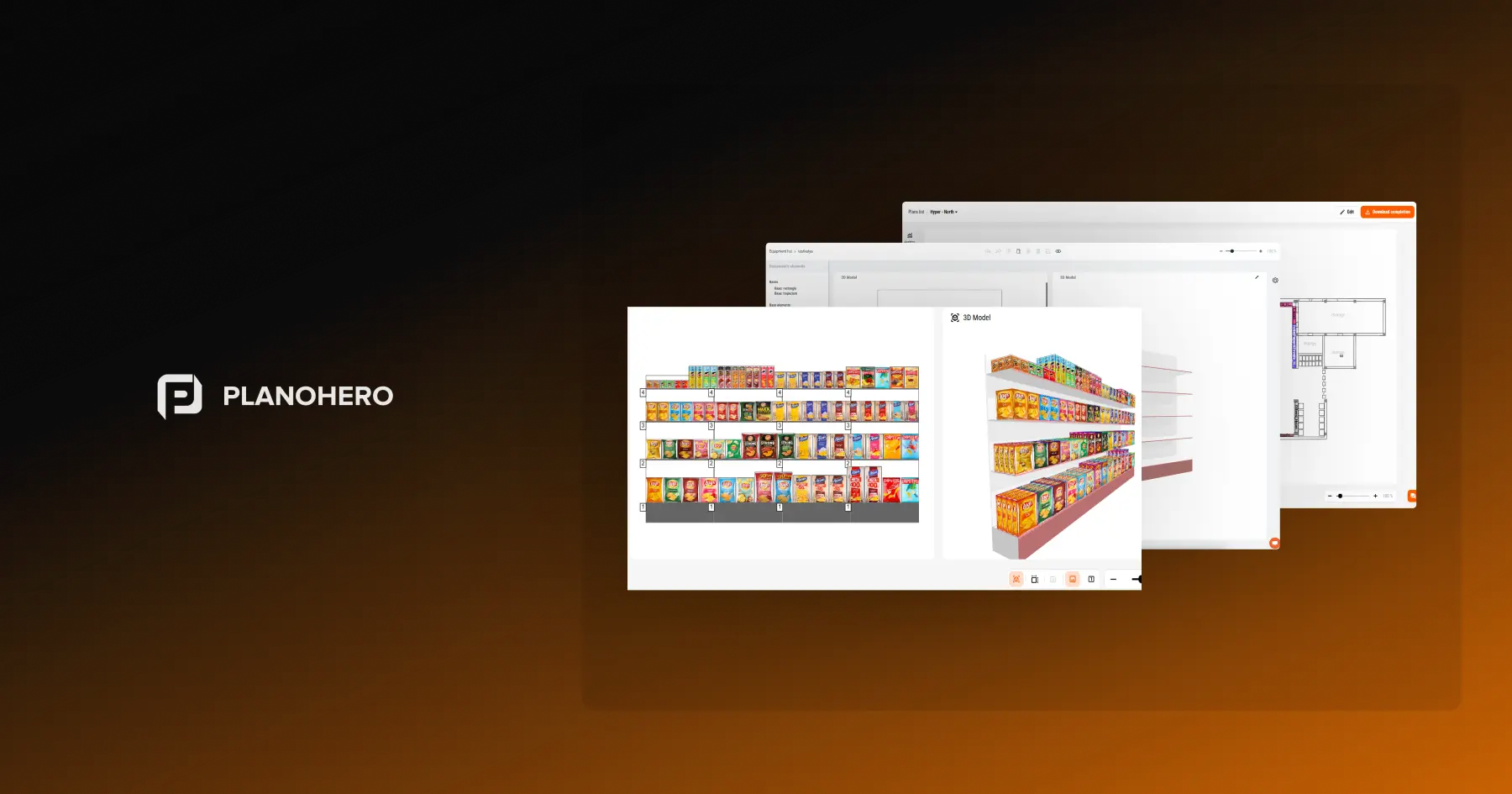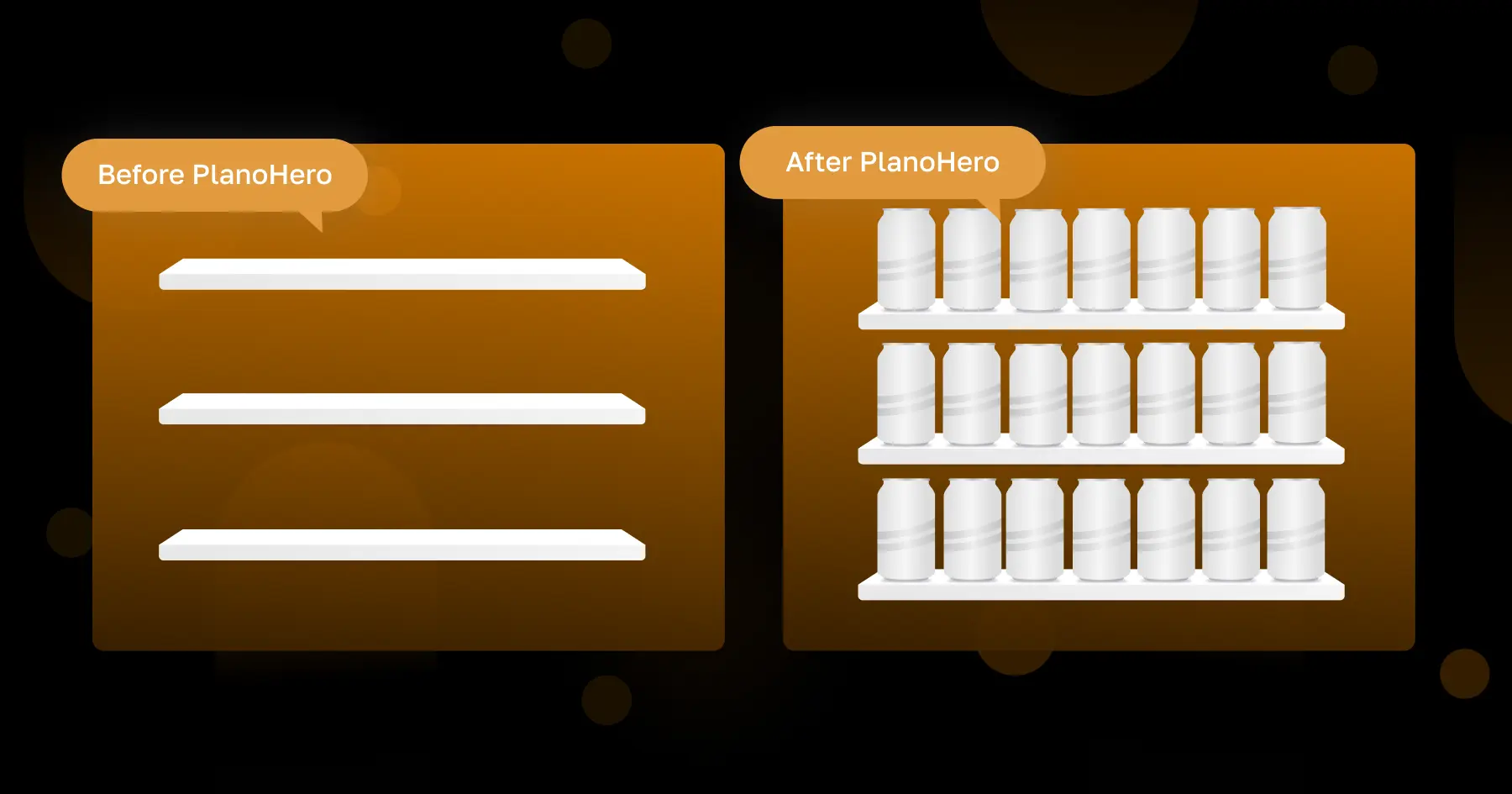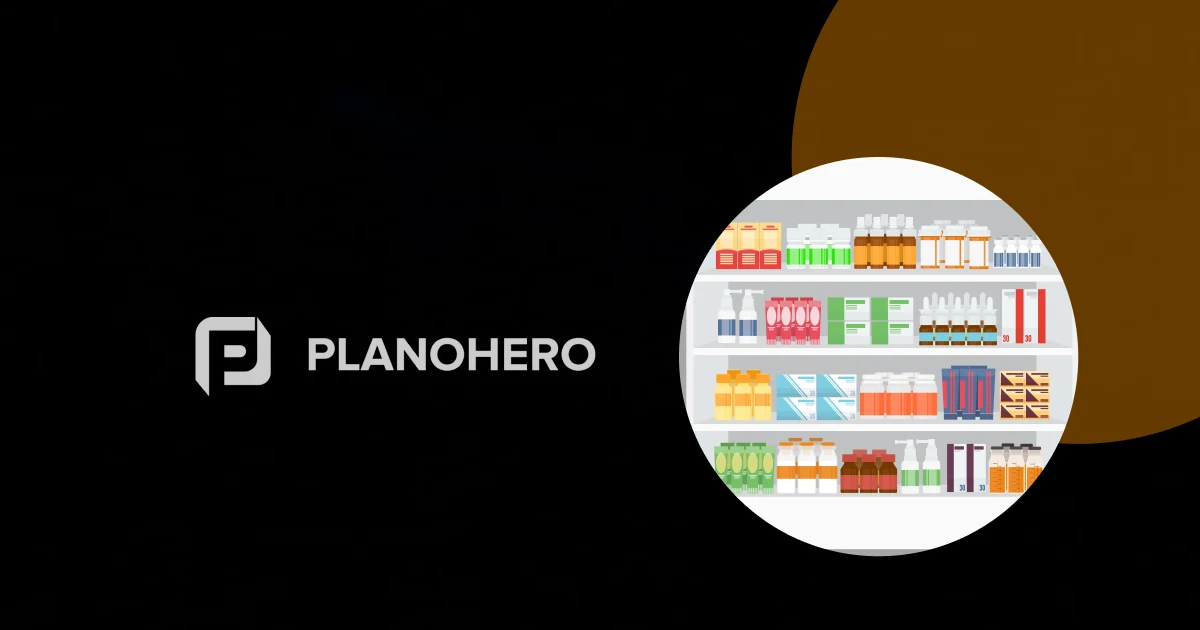This planogram software comparison explores the pros, cons, and alternatives of leading solutions, with a special focus on use cases and suitability—which types of businesses or retail environments each software is best for. Whether you’re a small retailer looking for affordable pricing or a global CPG manufacturer in need of enterprise-level analytics and reporting tools, this guide will help you choose the right fit.
Why Compare Planogram Software?
Retailers have different needs depending on company size, industry, and merchandising complexity. Some require simple, user-friendly interfaces with customizable templates, while others need advanced demand forecasting and integration with retail solutions.
A proper planogram software comparison ensures you find a balance between cost, functionality, and scalability.
Key Features to Look For in Planogram Software
When evaluating software, consider these must-have capabilities:
- Space planning & visual merchandising software → to design layouts and maximize sales.
- Customizable templates → to save time and standardize store formats.
- Analytics and reporting tools → to measure performance and drive data-driven insights.
- Integration with retail solutions (POS, ERP, category management systems) → for smooth workflows.
- Easy data import/export → to work with spreadsheets and inventory files.
- Real-time communication → so merchandising teams and store staff stay aligned.
- Demand forecasting & AI recommendations → to predict product performance.
- Affordable pricing tiers → for scalability across small and large businesses.
Types of Planogram Software
Choosing the right planogram tool starts with understanding the different categories available. Each type has its strengths and is better suited for specific business sizes and merchandising needs.
1. Cloud-Based Planogram Software
Cloud-based solutions run online and can be accessed from anywhere. They are ideal for businesses of all sizes — from small retailers to large multi-location chains — that need flexibility and teamwork across locations. These tools make it easy to share planograms, collaborate in real time, and keep systems updated without heavy IT support.
PlanoHero and its subscription model provide predictable costs, continuous updates, and access to the latest features without additional investments in IT infrastructure.
Best suited for: retailers who value flexibility, scalability, and always having the most up-to-date tools.
2. On-Premises Planogram Software
On-premises solutions are installed directly on company servers, giving businesses full control over their data. They are typically chosen by large enterprises with strict data security requirements. These tools often include powerful analytics and reporting features but come with higher upfront costs, ongoing IT maintenance, and less flexibility compared to cloud platforms.
Best suited for: global retailers or CPG manufacturers with robust IT infrastructure and high security standards.
3. Platform-Based Data Analytics and Planogram Software
Platform-based solutions go beyond simple planogramming. They act as all-in-one retail intelligence platforms, combining space planning, category management, and advanced data analytics in one system. These solutions integrate with ERP, POS, and supply chain tools, enabling demand forecasting, real-time data-driven insights, and end-to-end retail planning.
A leading example is the DATAWIZ BES Platform, which offers a full suite of data analytics solutions and planogram software, PlanoHero. This makes it possible for retailers to connect sales performance, inventory management, and merchandising execution into a single ecosystem.
Best suited for: large enterprises looking for all-in-one space planning, merchandising, and analytics in a single integrated platform.
4. Simple or Lightweight Planogram Software
These are entry-level tools designed for basic planogramming. They usually come with customizable templates and a user-friendly interface, so staff can create and edit planograms without much training. Their main advantage is affordable pricing, making them accessible to small businesses. However, they lack advanced features like detailed analytics, forecasting, or deep integrations.
Best suited for: small shops, independent retailers, or businesses that only need to design simple planograms rather than manage complex merchandising strategies.
Planogram Software Comparison: Top Tools
1. PlanoHero
PlanoHero is a modern cloud-based planogram software that helps retailers of all sizes transform merchandising into a growth engine. From building retail fixtures and store plans to creating, distributing, and controlling planograms, PlanoHero connects every stage of merchandising in one platform.
What sets PlanoHero apart
-
Ease of use: intuitive interface, ready-to-use templates, and AI-powered shelf rules.
-
Smarter control: assortment tracking, planogram compliance monitoring, and built-in analytics.
-
Seamless workflows: integration with retail systems and real-time collaboration between HQ and stores.
-
AI merchandising assistant Wizora.
-
Scalability: from a single shop to a nationwide chain, PlanoHero adapts without overwhelming complexity.
PlanoHero’s subscription model provides predictable costs, continuous updates, and the latest features always at your fingertips — no heavy IT setup required.
Best suited for: retailers who want a single solution for space planning, planogram execution, and merchandising optimization across all store formats.
PlanoHero vs DotActiv: Which Fits Your Retail Needs?
Both PlanoHero and DotActiv are strong players in the retail planogram and category management space. But they serve retailers differently:
Ease of Use & Implementation
-
PlanoHero: Built as a cloud-based SaaS solution. No installation required, unlimited users, real-time collaboration. Teams can start working immediately without heavy IT support.
-
DotActiv: Requires setup and is more complex to implement, often better suited for retailers with in-house IT support and data teams.
Advantage: PlanoHero — faster onboarding, lower entry barrier.
Pricing & Accessibility
-
PlanoHero: Subscription-based model with predictable costs, continuous updates, and no hidden upgrade fees. Scales affordably from small retailers to large chains.
-
DotActiv: Pricing is higher and geared toward enterprise-level clients. Licenses and advanced features may add extra costs.
Advantage: PlanoHero — accessible to all sizes of retailers, not just enterprises.
Functional Coverage
-
PlanoHero: Covers the full merchandising cycle — fixtures, store plans, planograms, AI shelf rules, planogram distribution & execution, compliance control, AI assistant Wizora, assortment tracking, and performance insights.
-
DotActiv: Strong in advanced data analytics, assortment optimization, clustering, and floor planning. Planogram execution and store-level control are less integrated compared to PlanoHero.
Advantage: PlanoHero — a complete end-to-end merchandising platform.
Collaboration & Scalability
-
PlanoHero: Unlimited users at no extra cost, role-based access, and direct HQ-to-store planogram distribution. Perfect for growing teams and chains.
-
DotActiv: More focused on analytics and reporting for centralized teams. Collaboration across multiple stores may require additional processes.
Advantage: PlanoHero — seamless teamwork across locations.
Who They’re Best For
-
PlanoHero: Best for retailers of any size who want an all-in-one solution for planograms, execution, and merchandising control without IT complexity.
-
DotActiv: Best for large enterprises that already have advanced data infrastructure and want deep category analytics.
PlanoHero vs RELEX: Merchandising vs Supply Chain Planning
Both PlanoHero and RELEX support retailers with advanced technology, but their focus is very different. PlanoHero specializes in planogramming, merchandising execution, and retail space optimization, while RELEX is a broad supply chain planning platform with heavy emphasis on forecasting, replenishment, and inventory management.
Ease of Use & Implementation
-
PlanoHero: 100% cloud-based SaaS. No installation, unlimited users, quick setup. Designed for merchandisers, store managers, and category teams with an intuitive interface.
-
RELEX: A powerful AI-driven platform, but complex to configure and implement. Requires integration with multiple data systems and often tailored projects with consulting support.
Advantage: PlanoHero — faster onboarding, immediate usability, less IT dependency.
Focus Areas
-
PlanoHero: End-to-end merchandising cycle — store plans, fixtures, planograms, AI shelf rules, planogram distribution & execution, compliance monitoring, assortment tracking, and shelf performance insights.
-
RELEX: End-to-end supply chain planning — demand forecasting, replenishment, inventory optimization, production scheduling, and promotion/price planning. Includes planogram optimization, but as part of a larger, supply-chain–oriented ecosystem.
Advantage: PlanoHero — purpose-built for merchandising and planogram execution.
Advantage: RELEX — stronger in supply chain, forecasting, and inventory planning.
Scalability & Accessibility
-
PlanoHero: Built for all retailer sizes — from single stores to nationwide chains. Scales easily with subscription-based pricing and unlimited users.
-
RELEX: Geared toward large enterprises with complex global operations. Smaller retailers may find the platform oversized for their needs.
Advantage: PlanoHero — flexible and accessible to every retailer.
Collaboration & Execution
-
PlanoHero: Real-time collaboration between HQ and stores. Planograms can be created, distributed, and monitored across locations with built-in compliance checks.
-
RELEX: Strong collaboration on supply chain planning, but merchandising execution and store-level control are secondary.
Advantage: PlanoHero — direct store-level execution and compliance control.
Recognition & Market Position
-
PlanoHero: A modern SaaS tool rapidly adopted by retailers looking for simple, effective, and scalable merchandising solutions.
-
RELEX: Recognized as a Leader in Gartner’s Magic Quadrant 2025 for Supply Chain Planning Solutions, trusted by global retailers and manufacturers.
Advantage: RELEX — proven strength in enterprise supply chain planning.
PlanoHero vs Scorpion Planogram: Modern SaaS vs Design-Focused Software
Both PlanoHero and Scorpion Planogram provide retailers with tools to design and optimize shelf layouts. While Scorpion emphasizes planogram design, 3D visualization, and consultancy support, PlanoHero delivers a full cloud-based merchandising platform that connects design with execution, collaboration, and analytics across retail chains.
Ease of Use & Interface
-
PlanoHero: Cloud-native, intuitive interface with AI shelf rules, ready-to-use templates, and automation for fast planogram creation. Accessible via browser, no installation needed.
-
Scorpion: Known for its modern, intuitive design interface. Customers highlight how easy it is to build planograms with shelves, bays, and templates in just a few clicks.
Advantage: Tie — both focus on simplicity and user-friendly design.
3D Visualization
-
PlanoHero: 2D/3D modes for viewing planograms and equipment. Data is focused on accuracy, execution, and compliance with standards. In addition, you can view planograms in augmented reality using the PlanoHero Layout app.
-
Scorpion: Strong advantage in 3D planogram visualization, allowing retailers to “walk through” designs, create professional visuals, and view shelves from a customer’s perspective.
Advantage: Scorpion — stronger 3D visualization tools.
Functional Coverage
-
PlanoHero: End-to-end merchandising platform — fixtures, store plans, planograms, AI rules, planogram distribution, execution monitoring, compliance checks, assortment tracking, and performance insights.
-
Scorpion: Covers design, planograms, store planning, and assortment optimization. Offers insights while designing, but relies more on consultancy services for extended support.
Advantage: PlanoHero — broader functionality across planning, execution, and analytics.
Collaboration & Execution
-
PlanoHero: Built for multi-location retailers. Enables HQ-to-store planogram distribution, real-time collaboration, compliance tracking, and automated reporting — all in the cloud.
-
Scorpion: Focused on planogram design and consultancy. Less emphasis on execution control and real-time collaboration across multiple store locations.
Advantage: PlanoHero — stronger execution, collaboration, and control.
Scalability & Accessibility
-
PlanoHero: Subscription model with unlimited users, continuous updates, and predictable costs. Scales easily from a single store to nationwide retail networks.
-
Scorpion: Offers personal expert support and a dedicated consultancy approach, but is less SaaS-oriented and may scale more slowly for large retail chains with many stores.
Advantage: PlanoHero — faster scalability and lower IT overhead.
PlanoHero vs Quant: Cloud-Native Merchandising vs Enterprise Intelligent Retail Platform
Both PlanoHero and Quant offer powerful tools for space planning and planogramming. Quant positions itself as an all-in-one intelligent retail platform with strong demand planning, ordering, and communication tools, while PlanoHero focuses on delivering a streamlined SaaS merchandising solution that makes planogramming, store planning, and execution more accessible and scalable for retailers.
Ease of Use & Implementation
-
PlanoHero: 100% cloud-based, ready to use from the browser without installation. Designed for fast onboarding and user-friendly planogramming with AI shelf rules, templates, and automation.
-
Quant: Comprehensive enterprise system covering space planning, category management, demand planning, ordering, communication, and shelf labels. Implementation requires more data integration but includes extensive consultancy support.
Advantage: PlanoHero — easier to adopt, faster onboarding, less IT-heavy.
Planogram Automation & Store-Specific Plans
-
PlanoHero: Creation and distribution of planograms across multiple stores with automation rules, templates, and compliance checks. Focus on the accuracy of execution and HQ–store control. Uses AI rules to create layouts on planograms that can be easily applied to any other planograms. This allows for standardization of layouts across the entire store chain.
-
Quant: Uses AI-driven planogram rules that automatically adapt layouts per store, optimizing based on sales and available space. Ideal for large chains with diverse store formats.
Advantage: Quant — stronger AI automation for store-specific optimization.
Functional Coverage
-
PlanoHero: End-to-end merchandising cycle — store floor plans, fixture building, planograms, assortment management, planogram distribution, compliance tracking, performance analysis.
-
Quant: Broader retail management scope — planograms, floor planning, demand planning, automatic ordering, shelf labels, surveys, communication, anomaly detection, and task management.
Advantage: Quant — wider functionality beyond merchandising (ordering, demand forecasting, shelf labeling).
Execution & Compliance
-
PlanoHero: Built for execution. Ensures compliance with HQ standards through planogram distribution, photo validation, and real-time tracking. Provides performance dashboards and sales analytics.
-
Quant: Includes task management, photo documentation, forms, and communication tools for stores. Strong compliance features, but as part of a larger platform.
Advantage: Both are strong in compliance, but PlanoHero is more merchandising-focused, while Quant extends into operations.
Scalability & Accessibility
-
PlanoHero: SaaS subscription model, unlimited users, continuous updates. Scales quickly for retailers of any size without requiring heavy IT resources.
-
Quant: Proven enterprise platform with 20,000+ stores in 45+ countries. Robust but requires structured integration and consultancy.
Advantage: Depends on need — PlanoHero for agility and speed; Quant for very large enterprises with complex ecosystems.
Conclusion
When it comes to planogram software comparison, the best choice depends on your business size, industry, and merchandising needs.
- PlanoHero stands out as a flexible, all-in-one option that works for both small retailers and large chains.
- DotActiv, RELEX are strong for enterprises needing demand forecasting and integration.
- Scorpion, Quant give smaller retailers affordable, user-friendly interfaces.
By aligning the right tool with your category management strategy, analytics, and visual merchandising goals, you can create smarter planograms that boost sales and improve operational efficiency.
Frequently Asked Questions (FAQ) on Planogram Software Comparison
1. Which planogram software offers the best features for small retail businesses?
For small retailers, the most important features are affordable pricing, easy setup, and user-friendly templates. Tools like PlanoHero with different subscription plans provide possibilities for all sizes of store chains - small retailers, mid-sized, and enterprise companies. PlanoHero runs in the cloud and scales easily as the business grows. PlanoHero, in particular, is offering unlimited users on a subscription model — making it cost-effective even for small stores.
2. How do the top planogram software options compare for ease of use and pricing?
-
PlanoHero: Cloud-based SaaS, unlimited users, intuitive interface, subscription pricing with predictable costs. Quick setup, minimal training required. All features to set the entire merchandising process from store plan/equipment and planogram creation to monitoring planogram execution and analytics.
-
DotActiv: Strong in category management, but requires more training; offers both free and paid tiers depending on features.
-
Quant: Feature-rich enterprise solution, but onboarding is more complex and pricing is higher.
-
Scorpion Planogram: Modern interface with strong design focus, but often tied to consultancy services that increase costs.
Best balance of usability and pricing: PlanoHero — fast onboarding and transparent SaaS model.
3. What is the best planogram software for maximizing visual merchandising and sales efficiency?
If the goal is visual merchandising execution and sales uplift, solutions like PlanoHero and DotActiv are strong contenders. PlanoHero combines planogram automation with compliance tracking and real-time execution monitoring — ensuring that HQ strategies actually reach stores. DotActiv supports advanced category management, which is useful for driving assortment decisions that improve sales efficiency.
4. What are the key differences between popular planogram software solutions for retailers?
-
PlanoHero: Cloud-native, fast onboarding, designed for all retailer sizes, strong in execution and collaboration.
-
RELEX: Supply chain–driven platform with forecasting and replenishment as core strengths.
-
Quant: Enterprise-level tool covering planograms, demand planning, ordering, and communication.
-
Scorpion: Focused on planogram design and 3D visualization, with consultancy support.
-
DotActiv: Good mix of planogramming and category management, with both free and enterprise options.
5. How does leading planogram software compare in terms of customer support and integrations?
-
PlanoHero: Offers direct cloud support, regular updates, and seamless integration with ERP/POS systems. Provides support and training.
-
Quant: Strong integration options but requires consultancy for setup.
-
RELEX: Excellent enterprise integrations, but implementation is longer and more resource-intensive.
-
DotActiv: Provides structured support and training; integration options vary by plan.
-
Scorpion: Relies heavily on consultancy for support rather than SaaS-style customer success.
Best for integrations + ease of support: PlanoHero (fast support + built-in SaaS updates).
Looking for a service to create planograms?
Try a free demo version of PlanoHero




